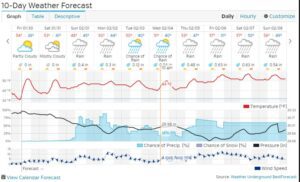
This common experience is not so different from how scientists, data analysts, and researchers use data encoding to interpret patterns in charts. Unraveling how this technique is not only a cornerstone of modern data visualization but also how it plays a significant role in our daily decision-making processes ensures you’ll not just become a passive consumer of information but an active interpreter of data. You will be able to discern patterns, trends, and insights that are hiding in plain sight.
Why Is It Important to Interpret Data Patterns in Charts?
- To understand trends. Let’s say you track the amount of time you spend studying each day for a month and plot this on a line chart. If the line is rising, it shows you’re studying more as the days pass. That’s a trend, and seeing this can help you predict your study habits for the next month.
- Charts often visualize changes over time or differences among categories.
- Identifying these trends or differences can provide insights into past events or predict future ones.
- To identify relationships. Let’s imagine a scatterplot comparing the time spent studying and your grades. If the points form a line going upward, it indicates the more you study, the better your grades. That’s a relationship!
- By examining how variables are plotted against each other, you can discern correlations, dependencies, or potential causality.
- To spot outliers. Sometimes, you see a point way off from the rest in the chart. That’s an outlier. Maybe it was the day you studied for 10 hours straight because you forgot about a test the next day.
- Charts can help identify outliers – data points that are significantly different from the rest.
- To identify clusters and gaps. In a chart, clusters are groups of data points close together, and gaps are spaces with no data. Suppose you and your friends compare the number of text messages you send daily. The chart could show a cluster of you and your close buddies who text a lot and a gap representing that one friend who barely texts at all.
How Do You Use Data Encoding to Interpret Patterns and Relationships in Charts?
Data encoding sounds like a spy technique, but it’s simple! It’s about how we represent data with things like position, length, angle, color, size, or shape. To use data encoding to interpret patterns and relationships in charts, you first need to understand what each type of encoding (e.g., position, length, angle, color, size, shape, etc.) represents in terms of data variables.
| Encoding Type | How Encoding is Portrayed | The Relationship or Pattern Exhibited | Common Charts Using the Encoding |
| Angle/Area | Using angles or areas to represent portions | If one slice of the pie is much larger than others, it indicates that category is a significant portion of the whole. | Pie charts, Radar charts |
| Color | Color encodes a variable’s value, with darker colors often indicating higher values | If there’s a gradient from light to dark across the chart, this suggests a trend in the data. | Heatmaps, Choropleth maps |
| Length | Using varying lengths to show the quantity | The length of the bars allows us to quickly compare different categories or tasks. | Bar charts, Stacked bar charts, Gantt charts |
| Patterns/Textures | Using patterns or textures for data segments | Noticing which pattern dominates in certain areas of the chart can indicate relationships or trends. | Stacked bar charts |
| Position | The position of a point or line on the X and y axes provides information about two variables | An upward trend: the variable on the y-axis is increasing as the variable on the x-axis increases (line chart). This may also demonstrate a positive correlation (scatterplot). | Line charts, Scatterplots |
| Shape | Using different shapes for data categories | If you notice one shape primarily in one area of the chart and another shape in a different area, this could indicate a relationship between the category and the other variables. | Scatterplots, Bubble charts |
Common Misinterpretations and Pro Tips
Just like any superpower, data encoding requires careful usage to avoid confusion.
- Always refer to the color legend. Misuse of color, like using similar colors for different categories, can lead to misunderstandings. Imagine mixing up your blue and green colored pencils in a geography test!
- Try to understand each encoding separately before you try to understand them all together. When a chart uses many encodings, it’s like trying to follow too many characters in a movie—you can lose track!
- Be aware of visual effects. Sometimes, fancy 3D effects distort data representation, making it hard to understand, like watching a 3D movie without glasses. Stick to simpler 2D charts when possible.
- Treat size encodings as indicative, not precise. Size can be hard to judge accurately. It’s like guessing the size of a distant object—it may look small, but it could be a giant!
Remember, practice is key to mastering this superpower. So, the next time you encounter a chart or graph, don’t just glance and move on. Take a moment, decode the data, and unlock the secrets hiding in plain sight. Now, that’s a real-world superpower!
Game, Set, Match: Sasha’s Ace Use of Data Encoding in Sports Analysis

Sasha had painstakingly compiled her team’s performance metrics over the season. She had the number of matches won, average scores per match, the number of aces served, unforced errors, and so much more. It was a massive dataset, but Sasha knew that to make her point, she needed to transform this raw data into a language that everyone could understand.
She began by creating a line chart to represent the team’s win-loss record over the season. The x-axis represented time – each point being a match, and the y-axis represented the match result – wins going up and losses going down. As she plotted the data, the resulting line graph showcased a distinct upward trend. This was their first victory. The chart was telling a story, and it was one of improvement.
Next, Sasha decided to highlight the correlation between increased practice and performance. She plotted a scatterplot with the number of practice hours on the x-axis and the match scores on the y-axis. As she filled in the data points, a pattern emerged – the dots were clumping upwards, forming a gentle incline. This indicated a positive correlation between practice hours and scores. The scatterplot was whispering a secret – more practice was leading to better performance.
But Sasha wanted to take her analysis a step further. She decided to create a pie chart to represent the proportion of wins attributable to serving aces. Each slice of the pie was a match, and its angle represented the percentage of points won by serving aces. A couple of slices stood out for being much larger than the others – these were the matches where serving aces had made a significant difference. The pie chart was singing a song of triumph, highlighting the critical role of serving aces in their winning streak.
Finally, Sasha used a heat map to illustrate the distribution of unforced errors throughout the season. In this chart, darker colors indicated a higher number of unforced errors. The map revealed a gradient from dark to light, indicating a decrease in unforced errors as the season progressed. The heat map was whispering a tale of hard-fought battles and learned lessons.
Armed with her charts, Sasha presented her findings to the school board. The line graph painted a picture of a rising team, the scatterplot demonstrated the power of practice, the pie chart sang the victory song of aces, and the heat map showed a tale of improvement.
The school board members were impressed. The data had spoken, and it spoke in their language. This was all because Sasha understood the power of data encoding to interpret data patterns in charts. Her team got the funding, their practices continued, and they went on to win the state championship that year, proving once again that data encoding isn’t just about numbers; it’s about telling a story and making a point.